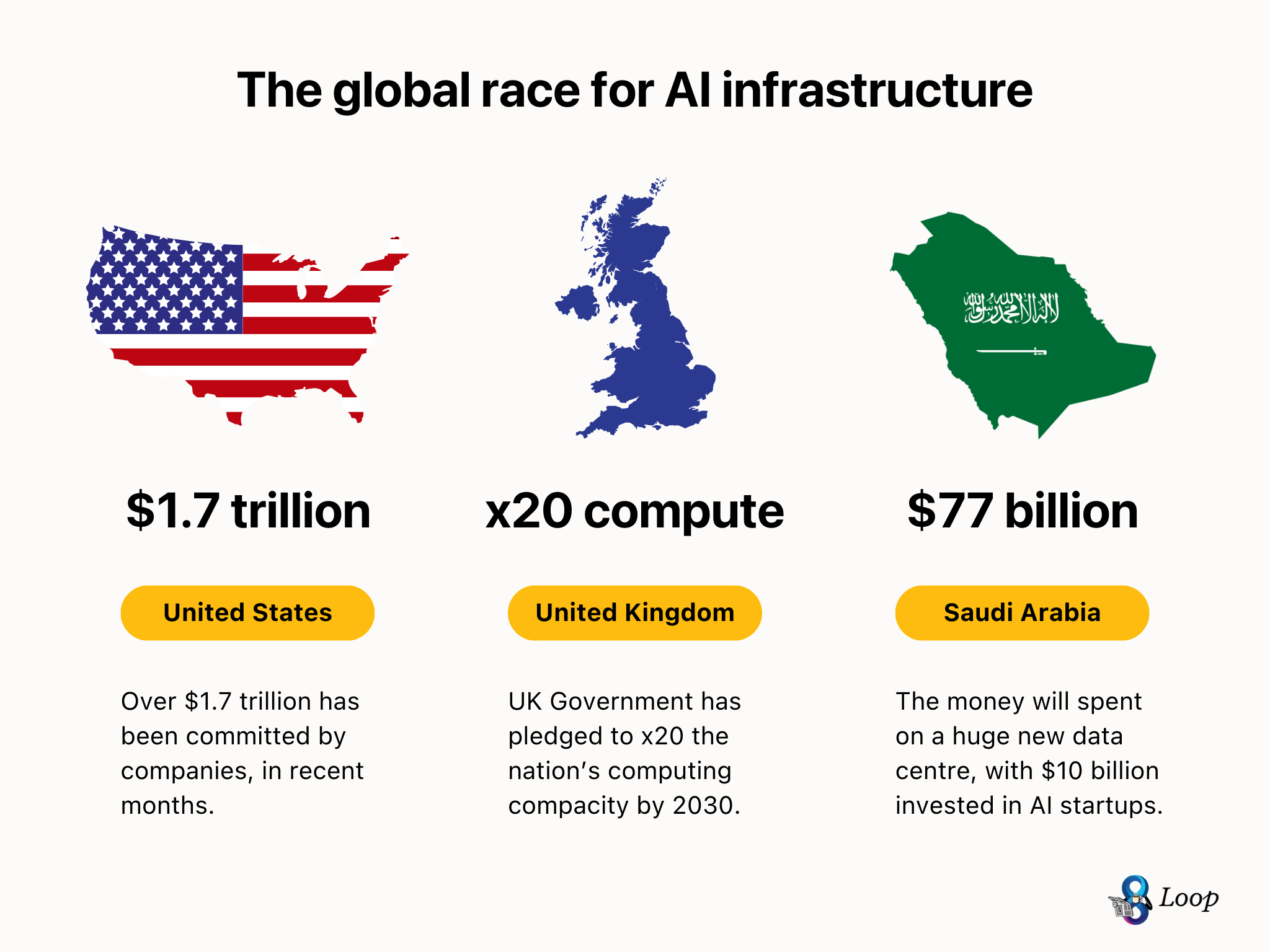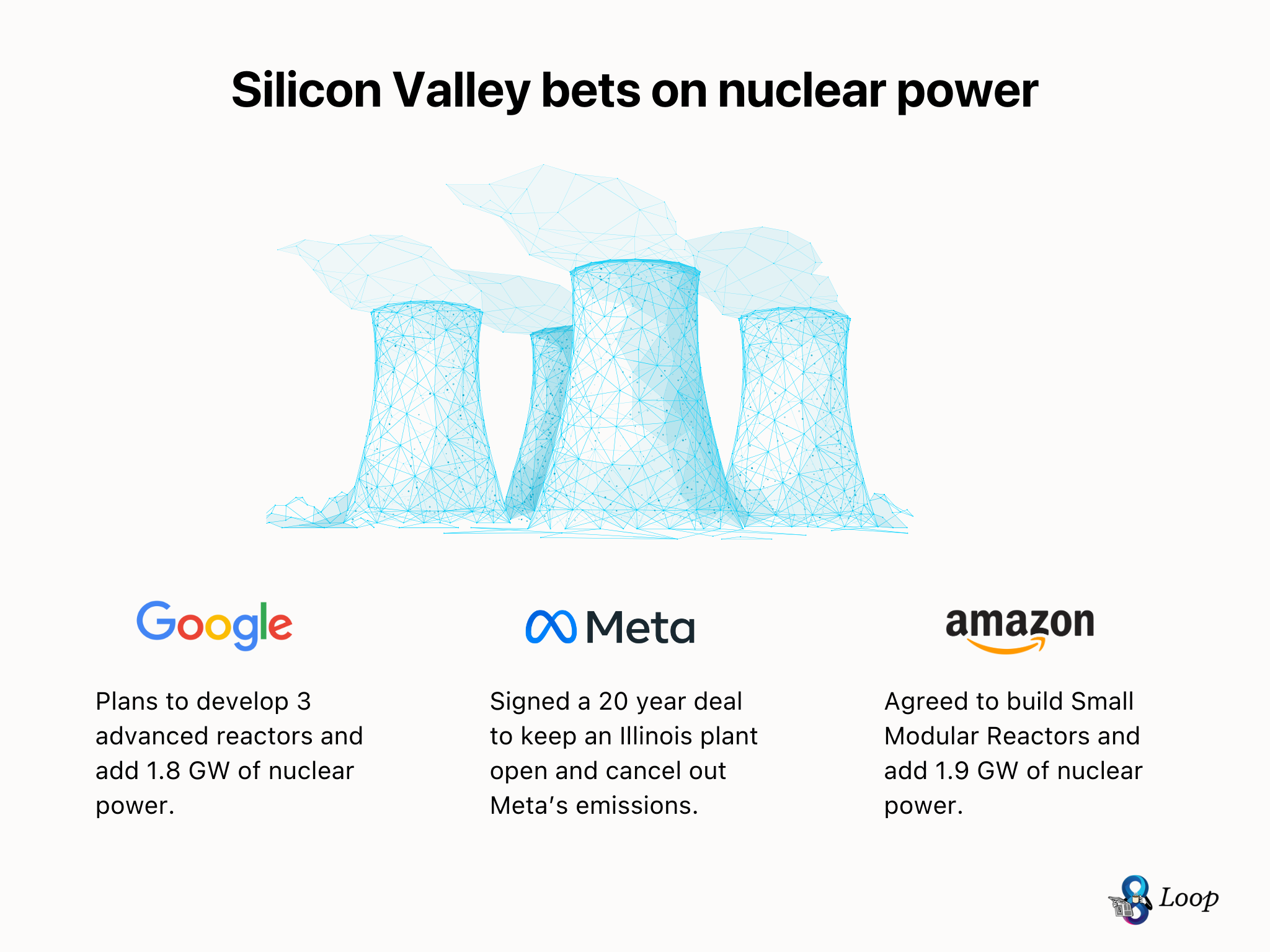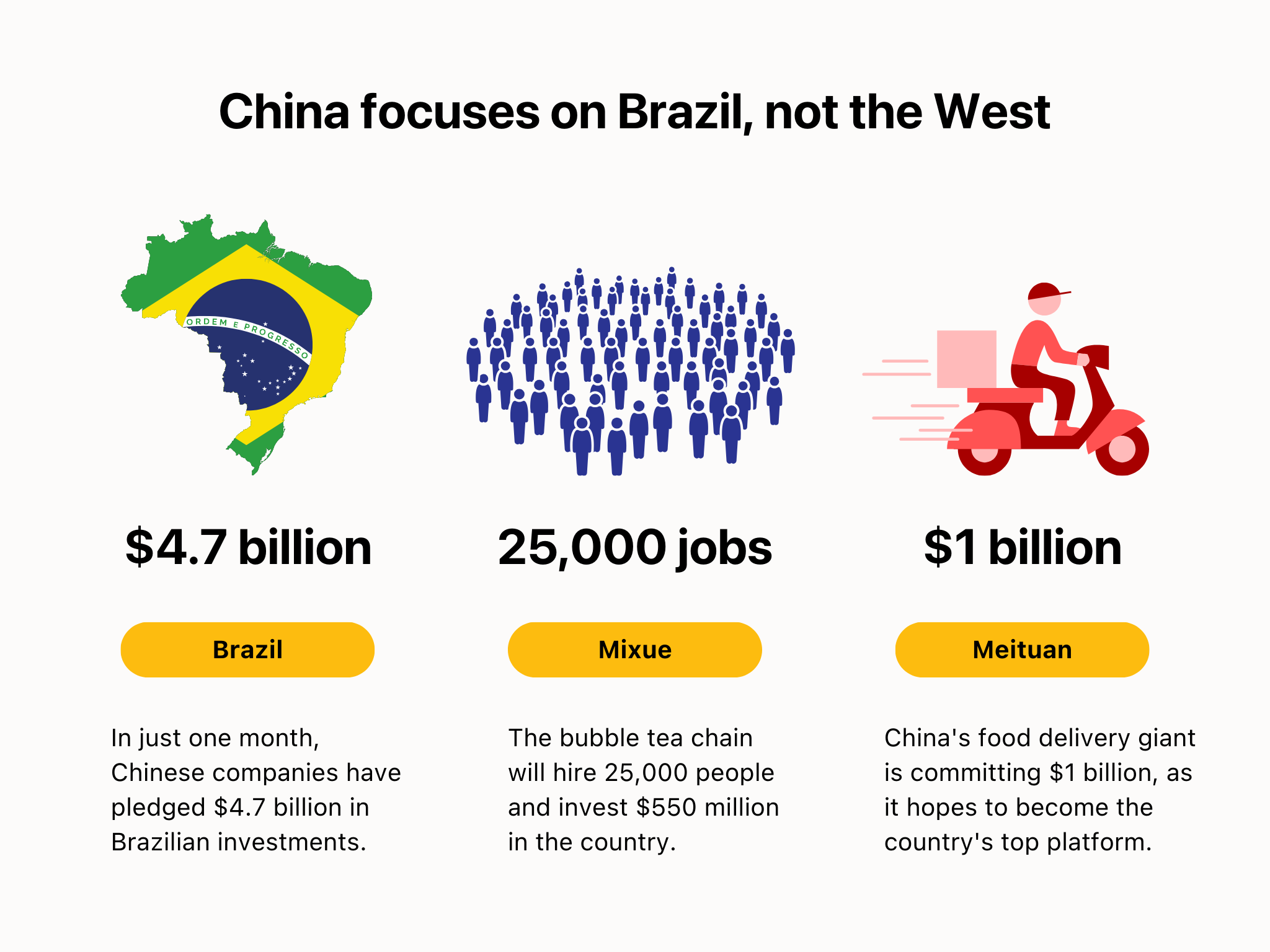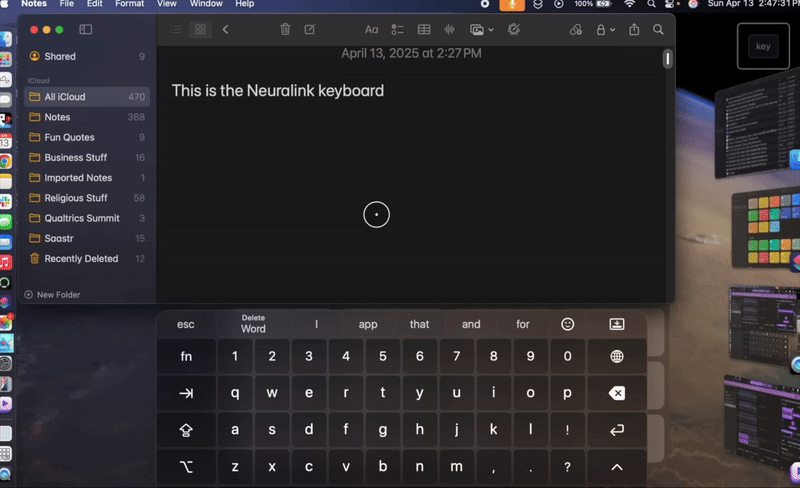
Loop's
Trend Report
The top 10 trends that stand out from Q2.
If you want to know where tech is genuinely heading, start here.
Scroll down to explore the trends
Introduction
Welcome to Loop's trend report for Q2 2025. I wrote this quarterly review to help business leaders, developers, and technology professionals to understand the most significant trends that are shaping our industry.
It's easy to become distracted by product launches and new models, but it's important that we step back and look at the bigger picture. This report aims to do just that - by identifying the key trends that are driving change across multiple sectors.
I've identified 10 major trends that are worth paying attention to. Some will present immediate opportunities, while others signal longer-term shifts that require strategic planning now.
Together, they paint a picture of where technology is heading - and where your organisation needs to be.
1. Over $1 trillion invested in AI infrastructure
Both tech companies and entire countries have committed to spend billions on AI infrastructure, with much of the money being spent on data centres and computing power.
Companies are racing against each other to build new data centres, as they believe that significantly more computing power is needed to train the next-generation of AI systems.
There is a significant regional imbalance here, with much of the investment coming from US tech companies. They alone have committed to spending $1.7 trillion dollars and this will only solidify America’s advantage over other nations.

But the US isn’t the only country making huge investments in AI. Saudi Arabia aims to handle 7% of global AI processing by 2030 and will spend $100 billion to meet that target. The UK Government also plans to increase its computing power 20-fold in the next 5 years, which will be possible thanks to planning reforms.
2. Tech giants go nuclear
Major tech companies are turning to nuclear power, as significantly more energy is needed to support their data centres. It’s a dramatic shift in Silicon Valley’s approach to energy, which previously focused on renewable sources, like solar and wind.
However, they’re not just purchasing nuclear energy. In some cases, these companies are actually reviving plants that had been closed down - as seen with Microsoft’s plan to restart the Three Mile Island reactor and Meta in Illinois.

Investments are also being seen in fusion power, as the industry hopes that the technology will progress further in the coming years. Several fusion startups have secured funding in recent months - including Realta Fusion, Xcimer Energy, and Focused Energy.
3. Defence tech continues to boom
- Strong quarter growth
- +105%
- Outperforming last year
- Deal sizes are growing
- $78.7 million
- On track for a record year
- $38.7 billion
For several years now, investors have become more willing to fund defence tech companies and that trend has only accelerated in recent months. The sector is already outperforming last year: startups have raised 75% of 2024’s total funding in just 6 months.
That was even before NATO agreed to significantly increase defence spending. Following the Russia-Ukraine war, Europe has moved to re-arm and will now spend 5% of GDP on defence by 2035 - which is a huge jump from NATO’s previous target of 2%.
To put this in context, NATO countries will be spending an extra $2.7 trillion per year on defence technologies. It’s expected that the sector will continue to see unprecedented growth, as these nations invest more in research and development - especially in autonomous weaponry and drones.
Investors prioritise defence tech companies
Shows the investment that defence companies have received from VCs
Strong performance in Q2 2025 and Q4 2024
Q2 was huge for defence tech funding at $19.1 billion, just behind Q4 2024's $19.4 billion. These are the biggest quarters we've seen since 2021, showing that investor appetite for defence companies isn't slowing down.
Source: Pitchbook

In June, Europe followed in the US’ footsteps and successfully tested an AI fighter yet for the first time. While there are still a lot of hurdles to deal with, this represents a fundamental shift in military capabilities as we move towards autonomous systems.
New defence tech companies are now emerging to challenge the traditional contractors, with Anduril, Helsing, and Mach Industries becoming the standout players. In previous years, investors were much more cautious about funding defence startups and believed that they would struggle to secure government contracts. But following the Ukraine war, that has all changed.
4. Corporate AI adoption starts to plateau
According to the payments firm Ramp, business appetite for AI tools is starting to plateau - following years of enthusiastic adoption.
The company's AI Index, which tracks business spending on AI products across roughly 30,000 firms, shows adoption stalled at 41% in May. This follows on from ten months of steady growth.
As you’d expect, larger enterprises lead the way with 49% adoption. While medium-sized companies are at 44%, and smaller businesses at 37%.
Corporate AI adoption begins to stall
Corporate AI usage has grown from 5% to 43% over the past 2.5 years
Rapid acceleration since March 2025
Corporate AI adoption has surged dramatically since March 2025, jumping from 26.3% to 43.3% in just four months. It's the fastest growth we've seen since tracking began in January 2023, with companies rushing to adopt AI tools - but it now appears to be reaching a plateau.
Source: Ramp

Although, it’s worth noting that Ramp’s methodology isn’t perfect. It’s entirely possible that some AI spending has been missed, since they heavily rely on merchant names and billing data.
Regardless, it does point to a broader trend and shows that companies are facing a reality check with productivity gains. Klarna has recently discovered this the hard way. After they announced plans to replace hundreds of support staff with AI, the company quietly reversed course when service quality took a nosedive.
It seems businesses are learning what technologists have long known: there's often a chasm between demo magic and real-world deployment.
5. AI videos are now incredibly realistic
When AI-generated videos started to emerge in 2023, they looked comically bad and a video of Will Smith eating spaghetti clearly showed the technology’s limit - but the potential was clear to see.
There have been gradual improvements since then, but we took a huge leap forward when Google unveiled their work on Veo 3. With incredibly realistic footage, synchronised audio, and great sound effects, the new AI model represented a quantum leap from those that came before it.
As a result, ordinary people can now create almost any video - with only their imagination being the limitation. That has led to some really creative ideas, including a parody series about two Stormtroopers as they fight across the Star Wars galaxy. Some have even used it to create short films.
However, it also poses new risks for us all - as the technology can be used by bad actors to spread misinformation. This is where watermarking tools, like Google’s SynthID, come in and help us to automatically spot content that is AI generated.
In just two years, we have seen rapid progress - with the technology quickly going from obviously fake to photorealistic. Thankfully, we’re still able to tell when a video is AI-generated, but that could change in just a few more years and we could reach a point where videos are no longer trustworthy.
The progress is dramatic and exciting, but poses some obvious risks. If we don’t get this right, the implications could extend far and wide - potentially disrupting everything from news media to criminal trials, throwing evidence and legal cases into doubt.
6. Governments become less risk-averse
In a break from previous years, the UK Government has become much more willing to experiment with AI services and change how it interacts with citizens. While other governments across the world are starting to embrace the technology, this has been particularly true in the UK.
They have just released a new app, which will make it easier for people to interact with the government and includes experimental AI features. Rather than spending years to test these new tools, which can lead to the technology becoming out-of-date and incredibly expensive, the UK has reduced that process to just a few months.

It seems the UK government is now more willing to take risks and is betting that the public understands these features are still experimental - even if that means facing some negative press along the way.
This willingness to release experimental AI tools, despite the real possibility of misinformation or technical glitches, shows that governments realise they need to move fast or risk being left behind.
7. Self-driving cars are being rolled-out faster
While we have been talking about self-driving cars for over a decade, we’re starting to see an acceleration in the technology’s rollout. Aurora recently hit a major milestone with its driverless trucks - which have completed a 1,200-mile trip between Dallas and Houston - completely unmanned.
Wayve, one of the UK's only self-driving startups, plans to launch robotaxis in London within the next year with government backing. The UK government is also pushing ahead with its self-driving timeline, moving the target date up to spring 2026 instead of 2027.
The technology is branching out well beyond just passenger cars. We're seeing autonomous freight trucks, delivery drones, and even Walmart rolling out drone delivery to five more US cities.
These companies are quickly expanding into new cities too - Amazon's Zoox is now testing in Atlanta, while Aurora is planning new routes to El Paso and Phoenix by late 2025.
8. Chinese tech companies invest significantly in Brazil
As the US imposes greater tariffs on imports, Chinese tech companies have made a major shift away from Western markets and are instead pouring money into Brazil and other emerging economies. In just one month, Chinese companies have pledged $4.7 billion in Brazilian investments across mining, renewable energy, and vehicle manufacturing.
Food delivery giant Meituan is spending over $1 billion in the country, while bubble tea chain Mixue plans to hire 25,000 people and invest $550 million. Meanwhile, TikTok Shop and Temu are racing to lock down these markets with rock-bottom prices before Western competitors can try to rival them.

This pivot is essentially China's answer to Western trade restrictions and bans - with the country now building economic relationships in markets that the US and Europe have somewhat ignored.
But the sheer scale and coordination of these moves suggests this isn't just individual companies making decisions. Instead, it looks like a deliberate strategy to ensure that Chinese tech ecosystems are embedded in these emerging markets, outside of Western influence.
9. Rapid advances are made with military drones
The Ukraine-Russia war has become a testing ground for military drone tech, and it’s evolving faster than anyone can defend against it. Russia was the first to roll out fibre-optic drones, which run on physical cables instead of radio signals.
This means that the drones cannot be jammed electronically. As a result, both sides are trying everything from road netting to other makeshift defences - as they hope to slow down the airborne threats.

Commercial drones are also being turned into weapons at an alarming rate, with both armies using China’s DJI drones against each other. DJI has acted to prevent its technology being used in this way, but there’s only so much the company can do.
In the last few months, DJI announced an upgrade to their Matrice 400 drone - which can fly for an hour, cover 40km, and create detailed 3D maps. You can just imagine how valuable that mapping data is for battlefield intelligence.
Ukraine has even used open-source software to coordinate drone strikes, which shows just how easy it has become to weaponise the technology.
The pace of change has left Western militaries scrambling to improve their own industries. UK security officials have warned that the defence sector needs to accelerate innovation and work closely with government departments.
As mentioned earlier, it has also agreed to meet a 5% spending target over the next decade - with other NATO countries agreeing to do the same and spend hundreds of billions more on defence.
10. Researchers make huge progress with brain-computer chips
Brain-computer interfaces have made the leap from science fiction into reality, with Neuralink making very impressive progress and attracting huge investment. So far, three patients have now had Neuralink chips fitted.
In one striking case, a non-verbal patient was able to narrate a YouTube video - using only their brainwaves. It’s a truly groundbreaking moment and incredibly exciting for people who are paralysed and nonverbal.

The FDA has since given Neuralink "breakthrough device" status, which has opened the door for more extensive human trials and should speed-up the rollout further.
Of course, Neuralink has a lot further to go with these human trials, but they have already made huge progress and gave a glimpse into what the future could look like. That has led to huge excitement from investors, as they hope to get involved in the research company.
Neuralink's value has nearly doubled from $5 billion to $9 billion since 2023, with investment pouring in at an extraordinary pace - rising from $43 million to over $600 million in just eighteen months.
The company has long talked about merging human abilities with AI - and this funding round hints that investors believe it could happen sooner than expected.
But beyond the grand vision, it's clear that this technology will transform the lives of people with severe disabilities, giving them the ability to communicate and connect with others in ways that were previously impossible - and that's what makes this so exciting to see.

 Loop
Loop